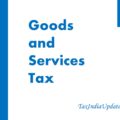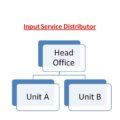Payment of Taxes under Goods and Service Tax Law: Ease in making payment towards tax and other dues is very important in a country like India. Challenge before the PM Modi Government is to usher in a mechanism of payment which is user friendly and at the same time allows payment through various modes, after utilization of ITC. A seamless payment mechanism has been envisaged.
In the GST regime, for any intra-state supply, taxes to be paid are the Central GST (CGST, going into the account of the Central Government) and the State/UT GST (SGST, going into the account of the concerned State Government). For any inter-state supply, tax to be paid is Integrated GST (IGST) which will have components of both CGST and SGST.
In addition, certain categories of registered persons will be required to pay to the government account Tax Deducted at Source (TDS) and Tax Collected at Source (TCS). In addition, wherever applicable, Interest, Penalty, Fees and any other payment will also be required to be made.
Features of Payment Processes under GST Law:
a) Electronically generated challan from GSTN Common Portal in all modes of payment and No Use of Manually Prepared Challan. Hence the GST is to be paid only through Internet Banking / Credit Card / Debit Cards / NEFT / RTGS.
b) Facilitation for the taxpayer by providing hassle free, anytime, anywhere mode of payment of tax;
c) Convenience of making payment online;
d) Logical tax collection data in electronic format;
e) Faster remittance of tax revenue to the Government Account;
f) Paperless transactions;
g) Speedy Accounting and reporting;
h) Electronic reconciliation of all receipts;
i) Simplified procedure for banks;
j) Warehousing of Digital Challan.
When does liability of Payment of GST Arises?
Liability to pay arises at the time of supply of Goods as explained in Section 12 and at the time of supply of services as explained in Section 13. The time is generally the earliest of one of the three events, namely ‘Receiving Payment’, ‘Issuance of Invoice’ or ‘Completion of Supply’. Different situations envisaged and different tax points have been explained in the aforesaid sections.
Electronic Ledgers in GST Regime:
Once a taxpayer is registered on Common Portal (GSTN), two e-ledgers (Cash & Input Tax Credit ledger) and an electronic tax liability register will be automatically opened and displayed on his dash board at all times. These would be updated in real time on an activity in connection with these ledgers by the taxpayer. Both the ITC ledger and the cash ledger will be utilized by the taxpayer for discharging the tax liabilities of the returns and others. Details in these ledgers will get auto populated from previous tax period returns. We understands these ledgers as under:
- Tax Liability Register: Tax Liability Register will reflect the total tax liability of a taxpayer (after netting) for the particular month.
- Cash Ledger: The cash ledger will reflect all deposits made in cash, and TDS/TCS made on account of the taxpayer. The information will be reflected on real time basis. The balance lying in cash ledger can be used for making any payment towards Tax, Interest, Penalty, Fees, Any other amount payable.
- Input Tax Credit (ITC) Ledger: Input Tax Credit as self-assessed in monthly returns will be reflected in the ITC Ledger. The credit in this ledger can be used to make payment of TAX ONLY and not other amounts such as interest, penalty, fees etc.
Due Date of Payment under GST:
The due of payment in GST Law is linked with filing of return. The normal assessee in GST law have to file its GSTR-3 Return on or before 20th day of succeeding month. It may be noted that the return under GST law cannot be filed until the ‘tax due’ has been paid. Thus, considering the section 39 the due date of payment of GST is 20th day of next month.





